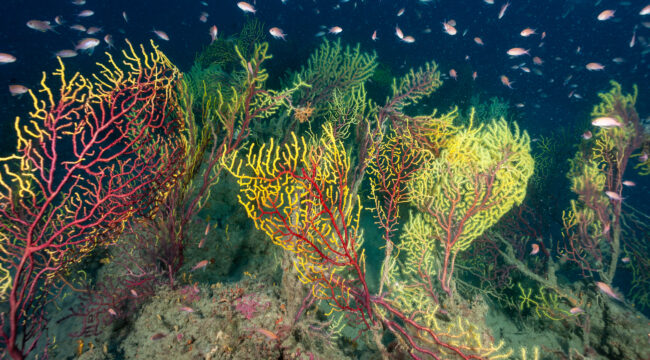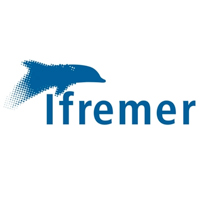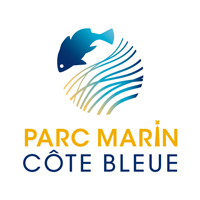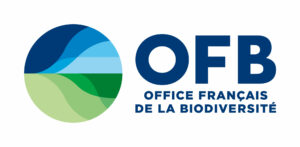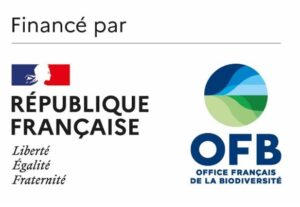1. Remarkable and unique populations in the Mediterranean
Over the past two decades, new populations of red gorgonians (P. clavata) have been described at depths between 50 m and 60 m within the Natura 2000 site “Côte Bleue Marine.” These populations are sparsely distributed on rocky outcrops covering an area of approximately 2300 hectares. The region is influenced by the Rhône River and can experience significant seasonal upwellings.
With their size, reaching up to 1.80 m, and their density (ranging from 14 to 25 colonies/m²), these populations are exceptional compared to those found elsewhere in the Mediterranean. The extraordinary size of these gorgonians remains unexplained. Could it be a combined effect of the abundant food supply brought by the Rhône River and the upwellings, along with the low current conditions in the area? Or is it the result of phenotypic plasticity driven by environmental conditions or specific genetic characteristics? These are the questions we are working to answer.
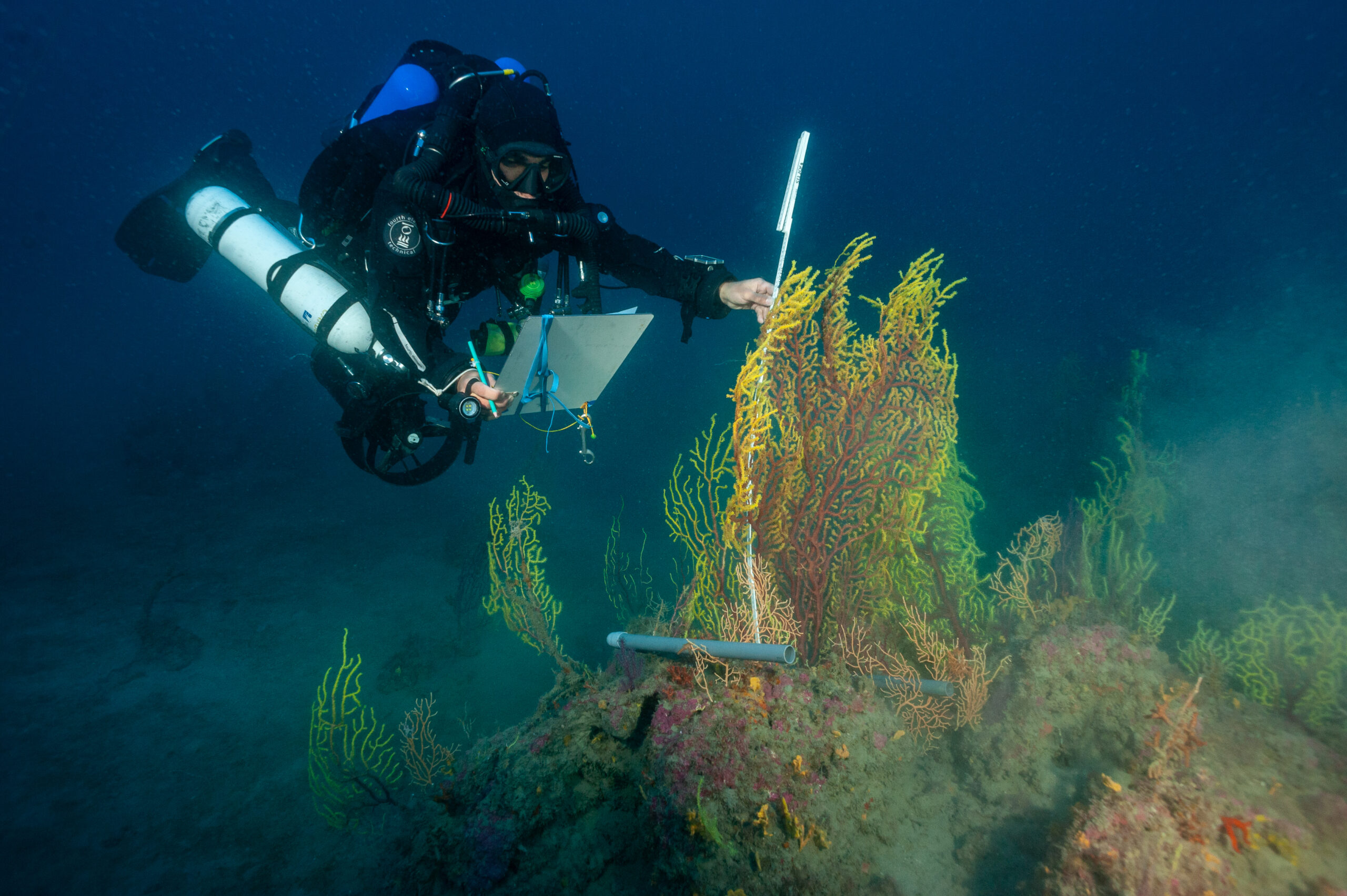
Monitoring of a red gorgonians population (Paramuricea clavata) in the Catchoffs area was carried out using a random quadrat of 50 cm x 50 cm. A total of 20 quadrats were surveyed within each of the studied populations. Within each quadrat, gorgonians are counted, measured, and their health status is recorded.
2. A climate refuge for the species in the face of global change?
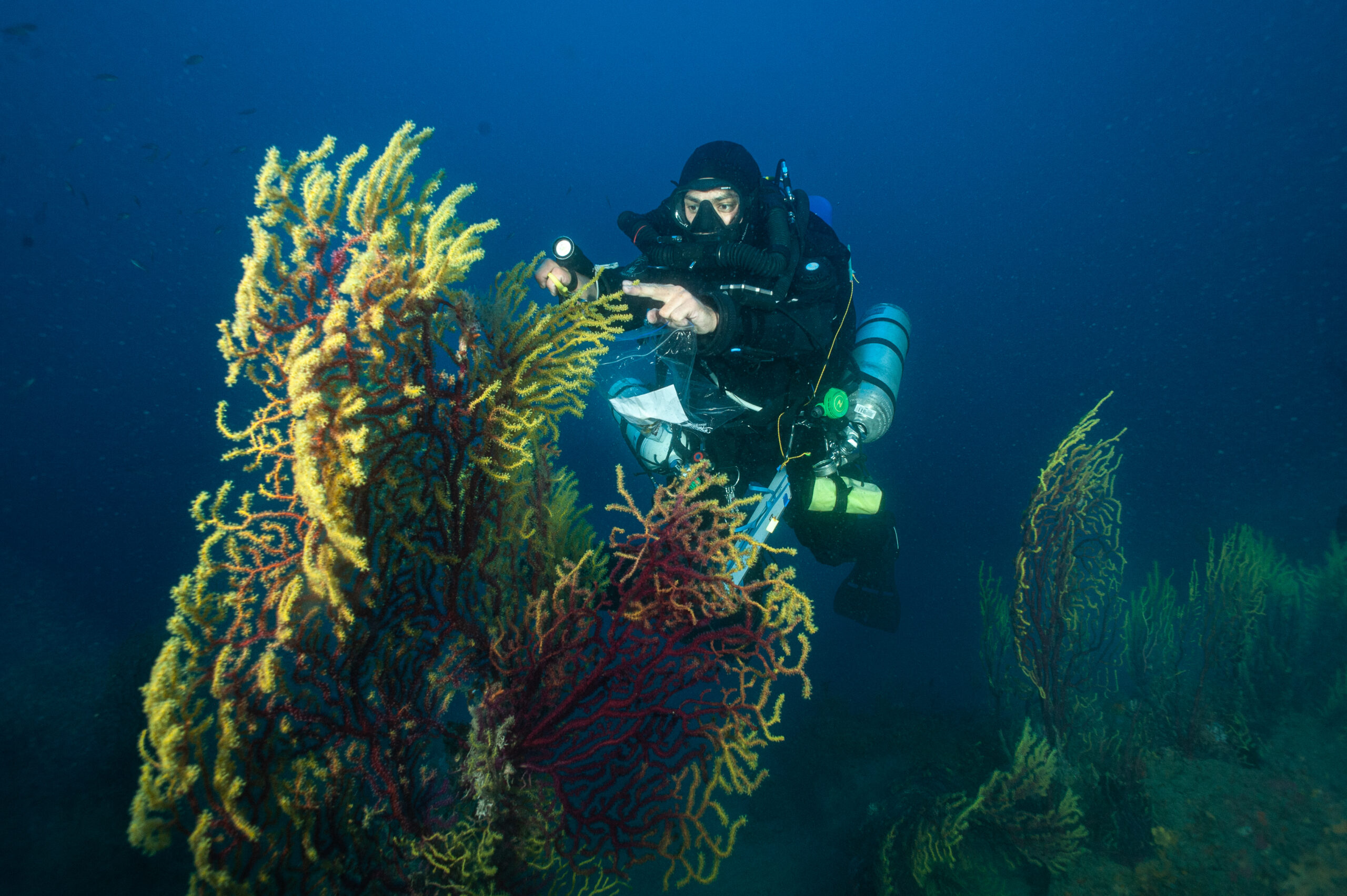
Sampling from a red gorgonian colony (P. clavata) was conducted for the study of population genetics in the Catchoffs area.
3. Populations impacted by anthropogenic pressures
The primary anthropogenic pressure affecting the red gorgonian populations in the Catchoffs area is recreational fishing. Although many nets and trawler remnants are found on the seafloor, impacting gorgonian populations, the most significant pressure comes from recreational fishing, with up to 100 vessels recorded per day during the gilt-head bream (Sparus aurata) fishing season. Despite the depth exceeding 50 meters, recreational fishers sometimes anchor their boats using an anchoring system with a sliding buoy on the line (known as “Marseillaise-style” anchoring). The buoy’s role is to stop the anchor from descending further when the fishermen pull the anchor up against the buoy, making it easier to retrieve. However, this anchoring method is devastating to the seafloor, as the anchor and chain scrape the bottom before being hauled back up. Although more and more recreational boats are equipped with engines featuring dynamic positioning, and the managers of the Marine Park of Côte Bleue offer fishermen an alternative, less destructive anchoring method, many fishermen still use this harmful technique.
While the gorgonian populations in the Catchoffs are currently shielded from the effects of climate change, effective management of human activities that directly impact these populations is crucial to help preserve these remarkable gorgonian populations.
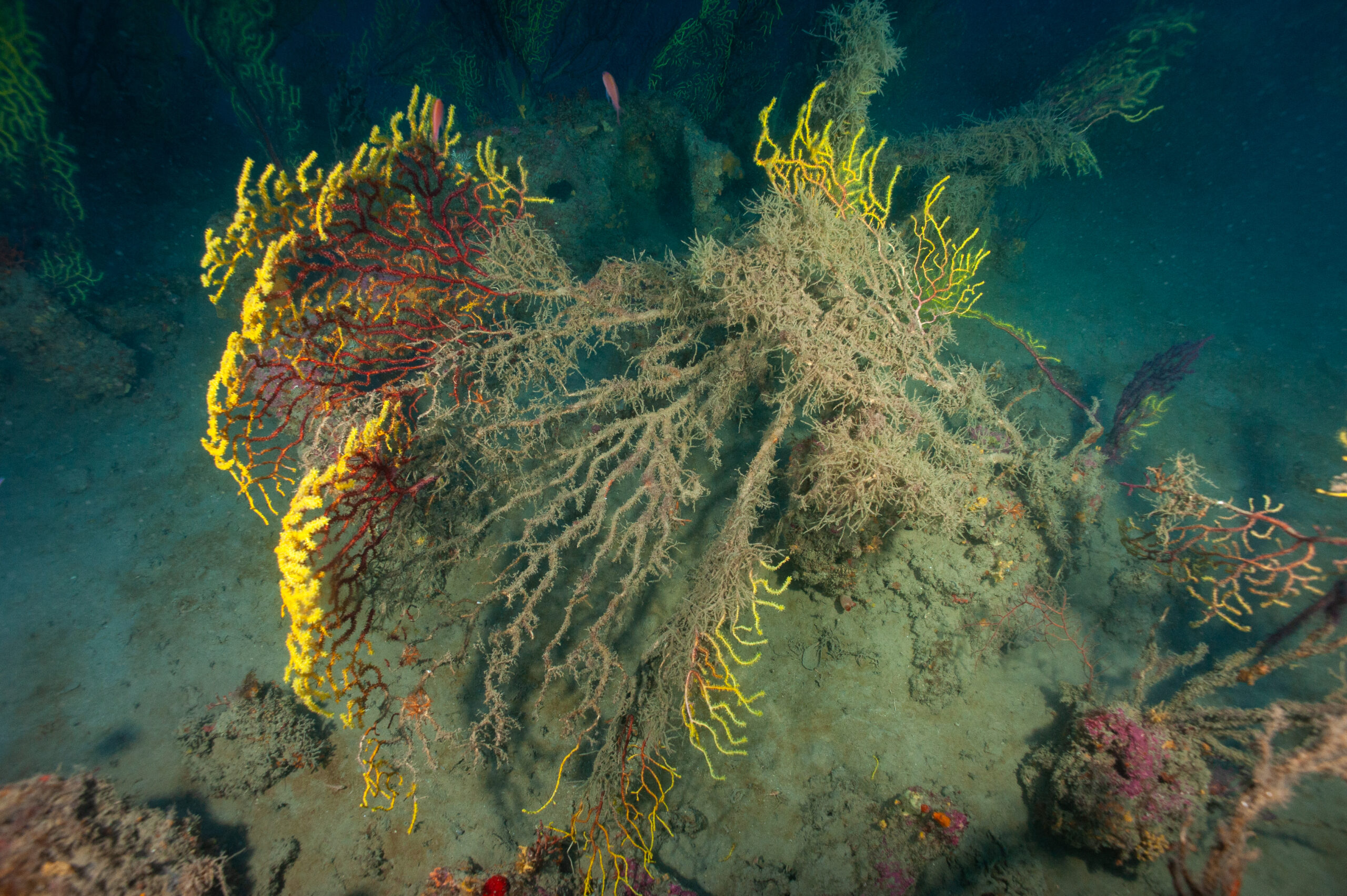
A large P. clavata colony (> 1.20 m) ripped off by anchoring in the Catchoffs area.
4. Advancing conservation of gorgonian populations through science
In order to take action for the preservation of gorgonian populations in the Catchoffs area, several scientific protocols have been established:
- Study of red gorgonian fopulations and their health status: This is carried out directly through diving. Divers use 50 cm x 50 cm quadrats to record the number of colonies, their size, and their health status (including any signs of recent or ancient necrosis). These data allow for comparisons between populations in terms of mean density, mean biomass, size-class distribution, and growth dynamics.
- Exploration of unstudied sites: This is conducted either through diving or using a Remote Operated Vehicle (ROV). The use of rebreather diving and underwater propulsion systems optimizes the time spent on the seafloor and increases the distance covered, enabling divers to assess and initially describe the site.
The ROV allows for more immersion sessions in a single day and enables a denser exploration of the Catchoffs area to confirm or dismiss the presence of gorgonians at a predefined set of sites. With the ROV equipped with an HD camera and a stereo-photogrammetry system, it is also possible to record videos and create 3D models of the seafloor, providing a more detailed illustration and description.
The coupling of ROV and rebreather diving enhances the efficiency of exploring the area, with divers sent to sites previously explored by the ROV, optimizing dive time and immersion. - Assessment of anthropogenic pressures: This is carried out directly by divers or through the ROV’s video recordings. This allows for identifying the impacts on the Catchoffs area and obtaining data that can inform actions to protect gorgonian populations.
- Sampling red gorgonian fragments: These samples are used to further study the genetics of the populations. Focus is placed on understanding the phenomena that lead these colonies to achieve such large sizes, and mapping the exchanges and connectivity between the Catchoffs populations and those outside the area.
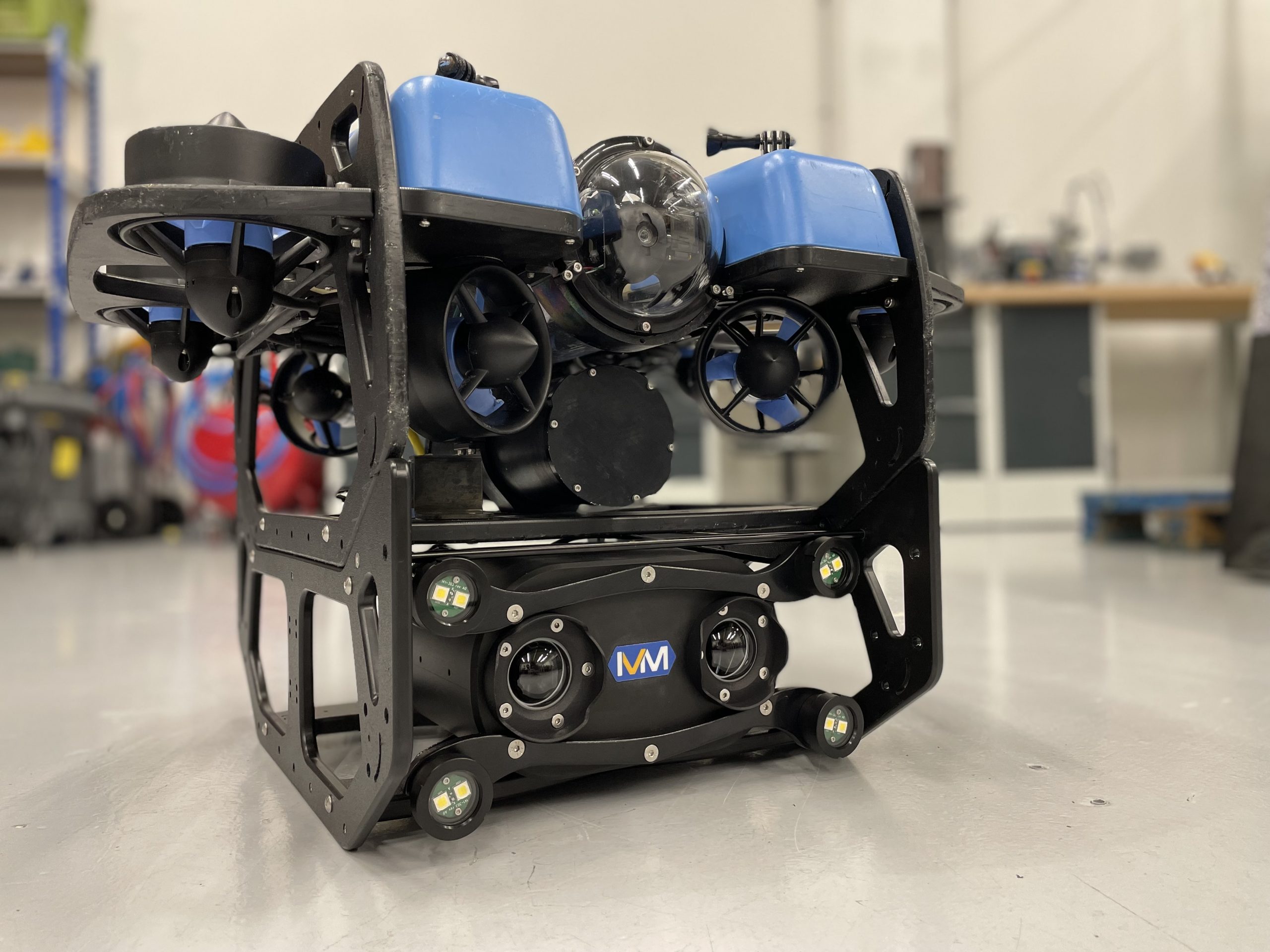
Blue ROV equipped with the HYDRO 100 system, developed by IVM Technologies.
Zoom sur les zones mésophotiques

The mesophotic zone is the depth zone located between 30 m and 200 m, depending on the light that reaches it. Its name comes from the greek “meso” meaning “middle” and “photic” meaning “light,” referring to an area where light penetrates moderately.
This zone remains one of the least known and least protected ones of the global ocean. However, the habitats it harbors are often more affected by anthropogenic activities, particularly fishing, than surface waters.
The mesophotic zone covers about 5% of the ocean’s surface, more than the surface zone (which is 2%), and is located over 99% within our exclusive economic zones. This zone plays a crucial role as a biodiversity hotspot, serving as a breeding and feeding ground for significant fish stocks, housing a multitude of species that have yet to be described, and acting as a transitional and ecological continuity space between coastal and deep ecosystems. Furthermore, it plays an important role in the oceanic carbon cycle and offers a potential refuge for coastal species facing increasing environmental and anthropogenic pressures.
Protecting mesophotic zones and preserving the habitats they contain are essential to maintain ecological continuity and ensure the proper functioning of the global socio-ecosystem, of which humans are an integral part.
Pour en savoir plus
Website of the Natura 2000 area:
https://cotebleuemarine.n2000.fr/
INPN sheet of the Natura 2000 area:
https://inpn.mnhn.fr/site/natura2000/FR9301999
website of the Marine Protected Area “Parc Marin de la Côte Bleue”:
https://parcmarincotebleue.fr/
WORMS taxon details (Paramuricea clavata) :
https://www.marinespecies.org/aphia.php?p=taxdetails&id=125387
